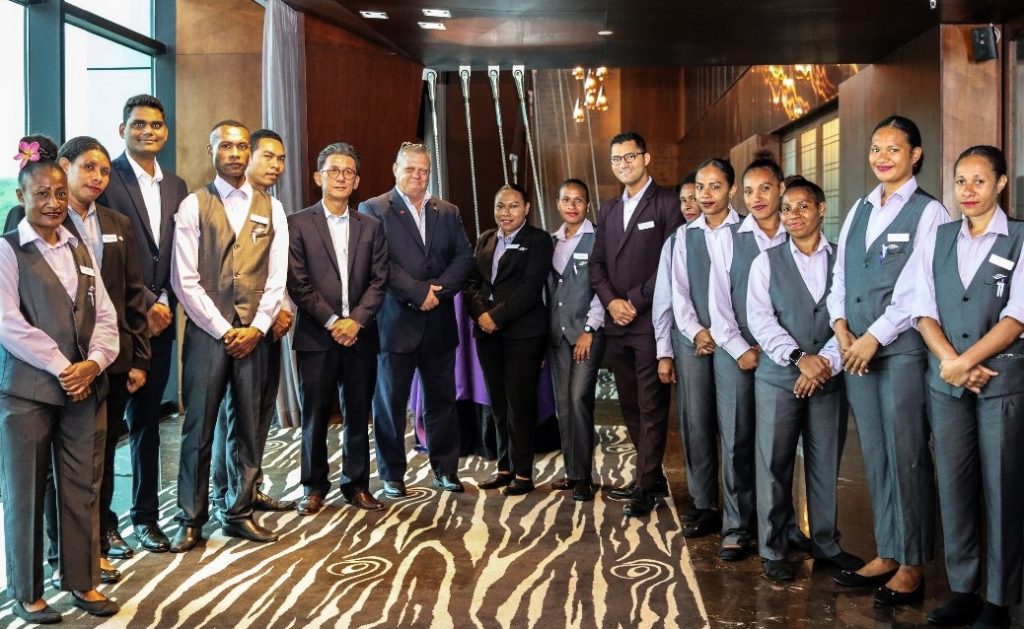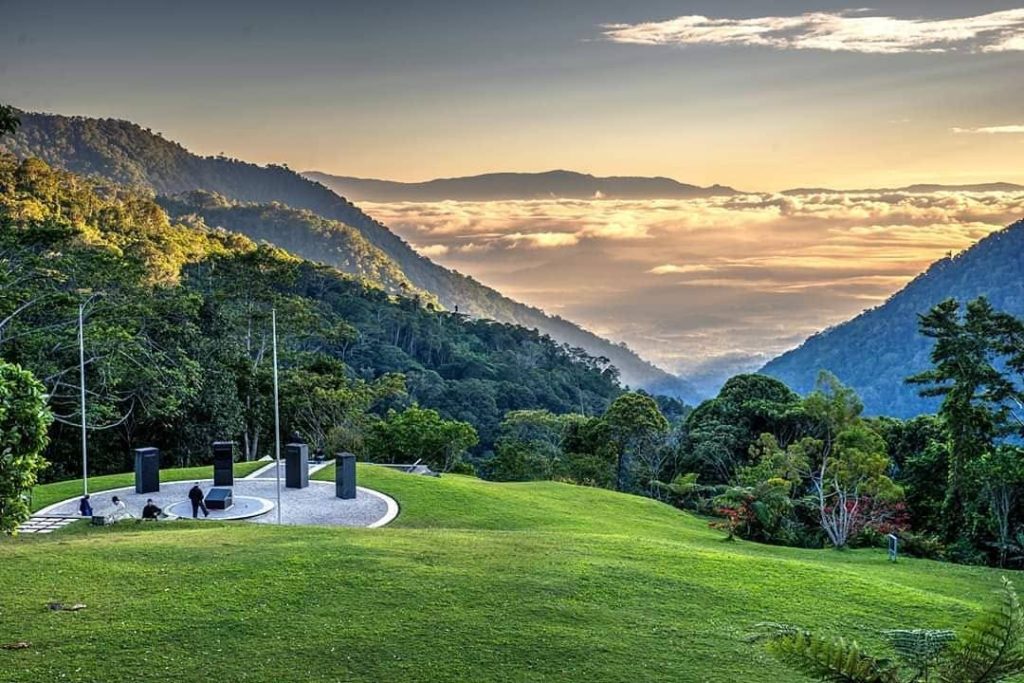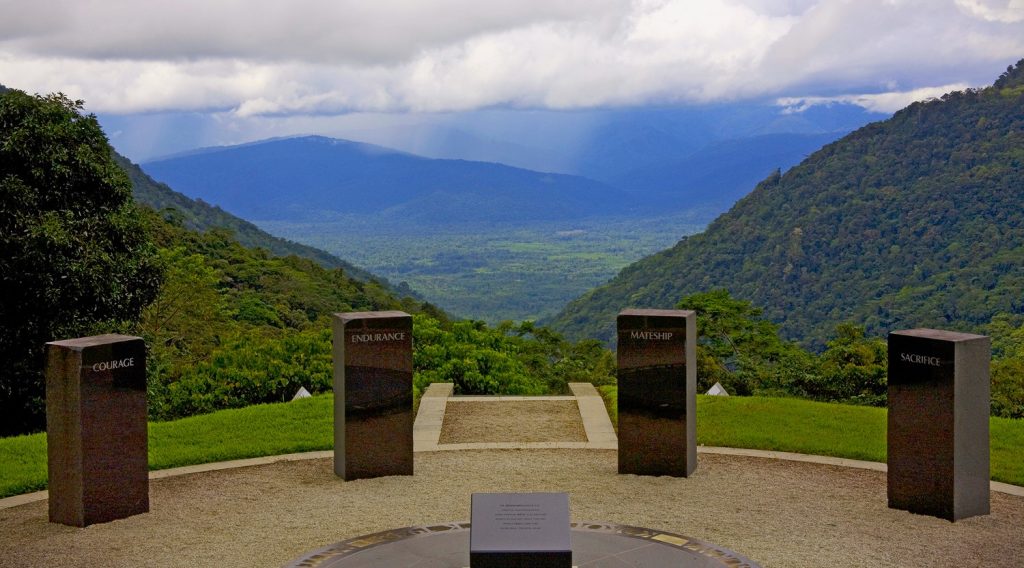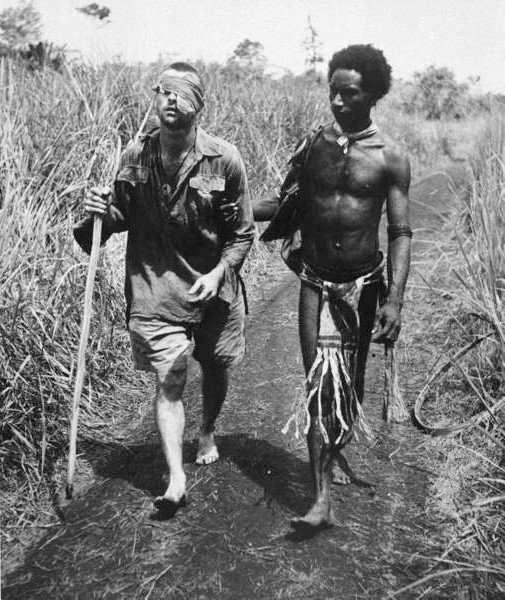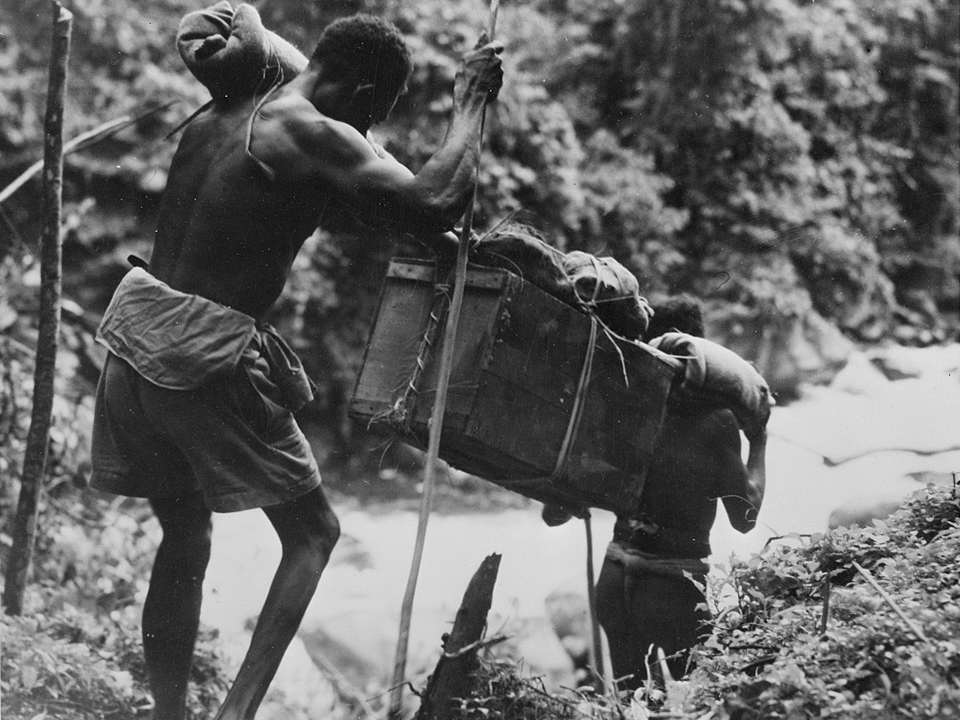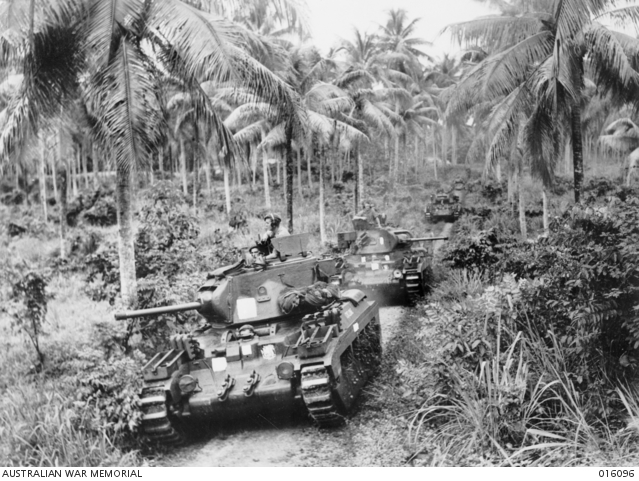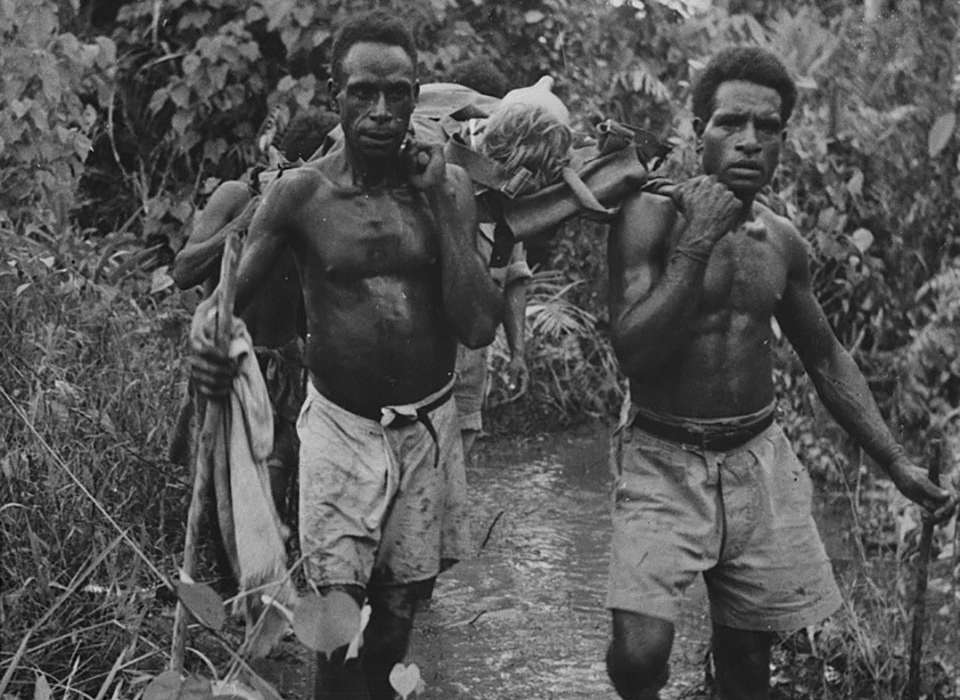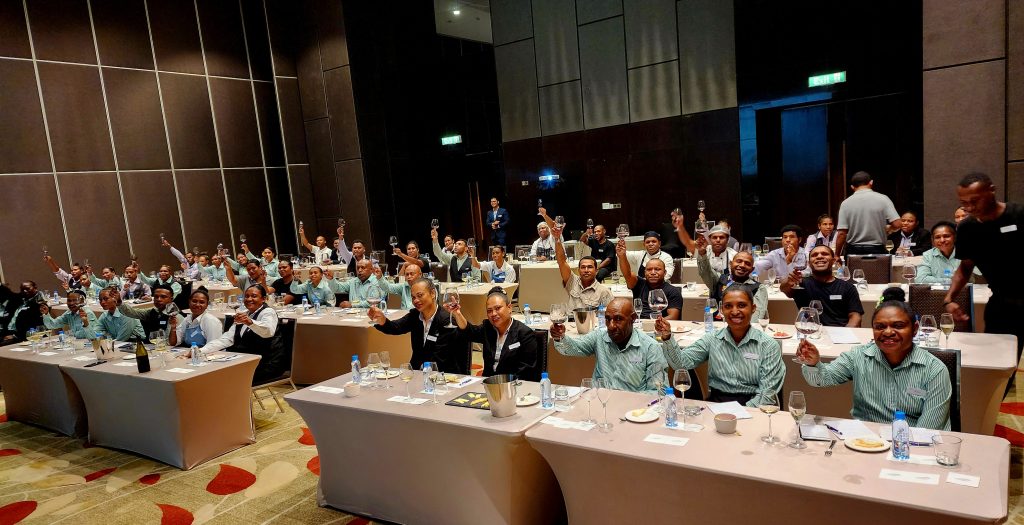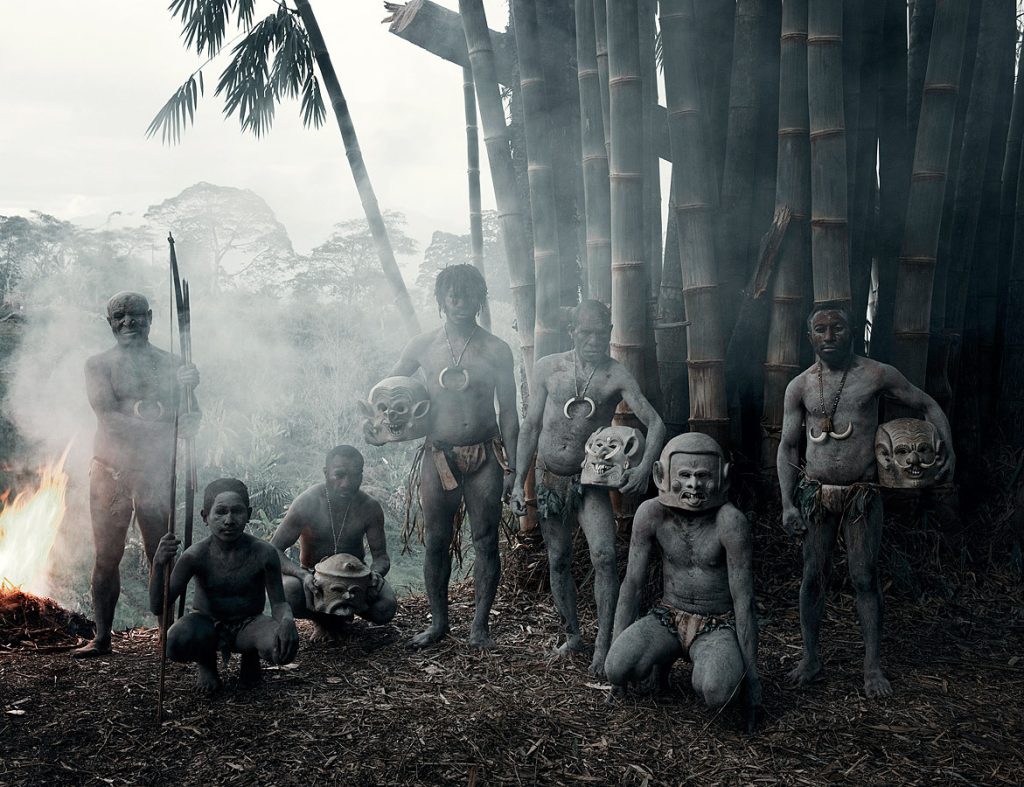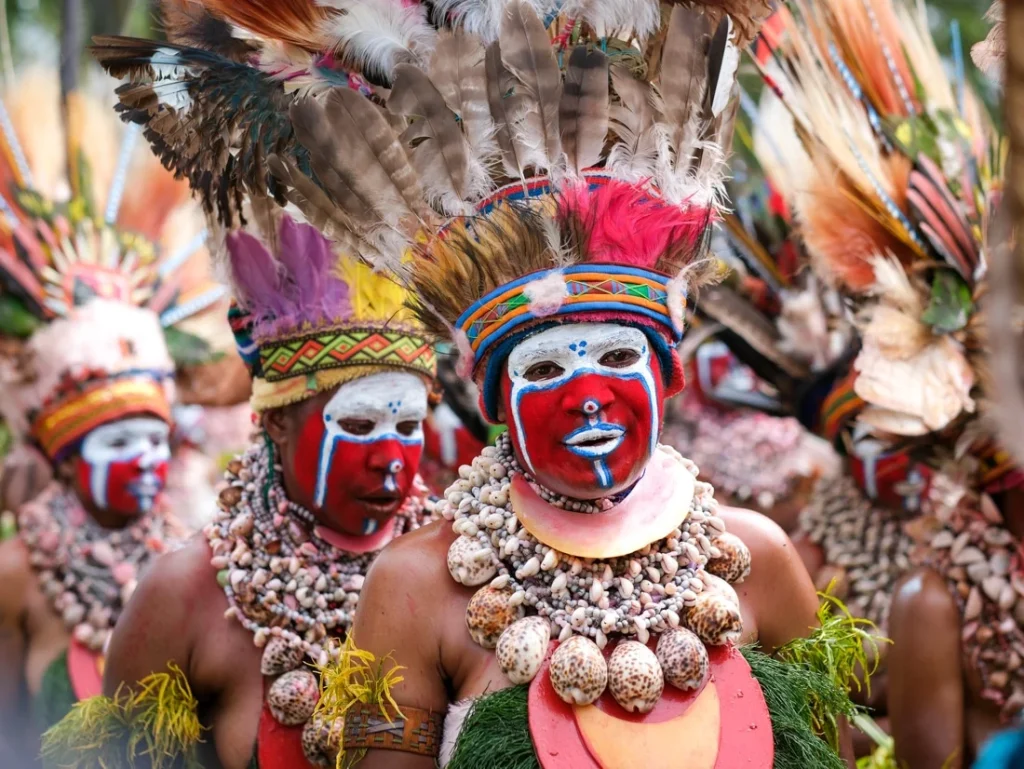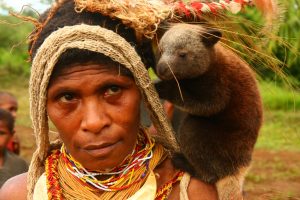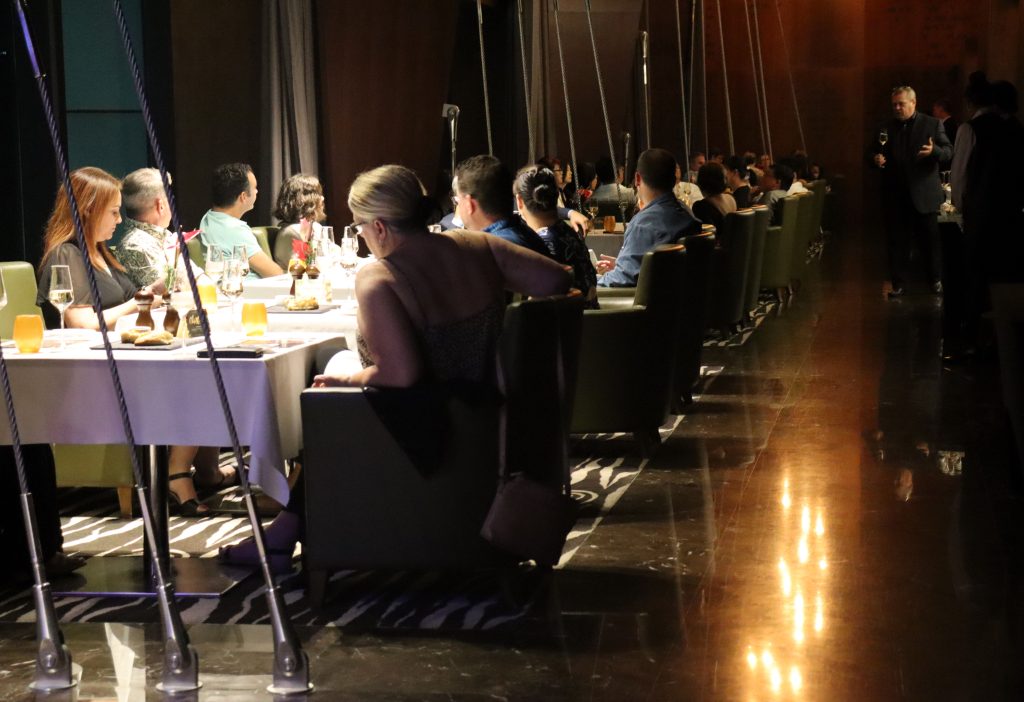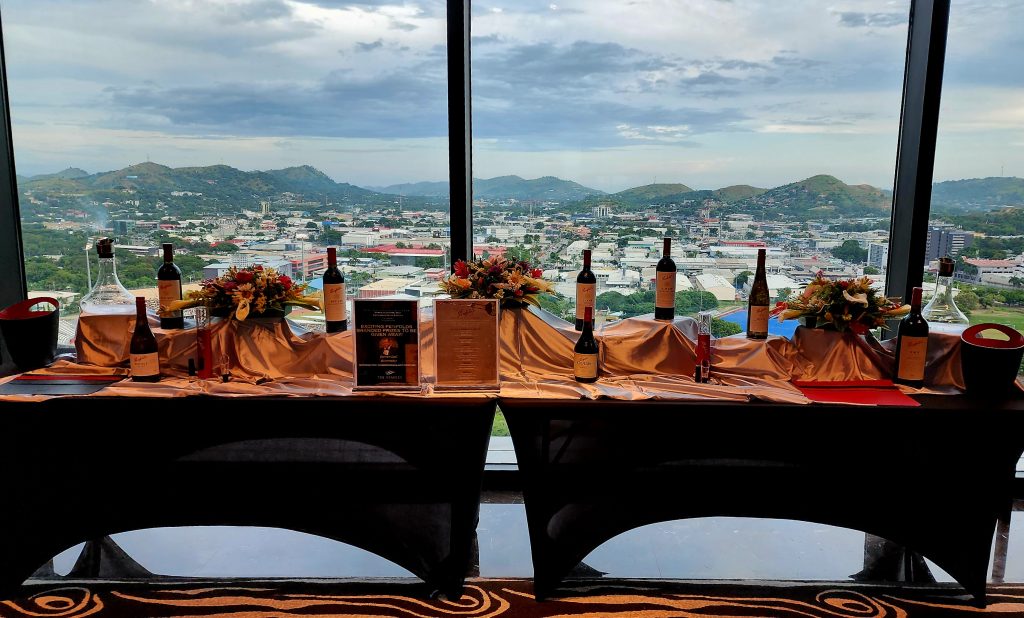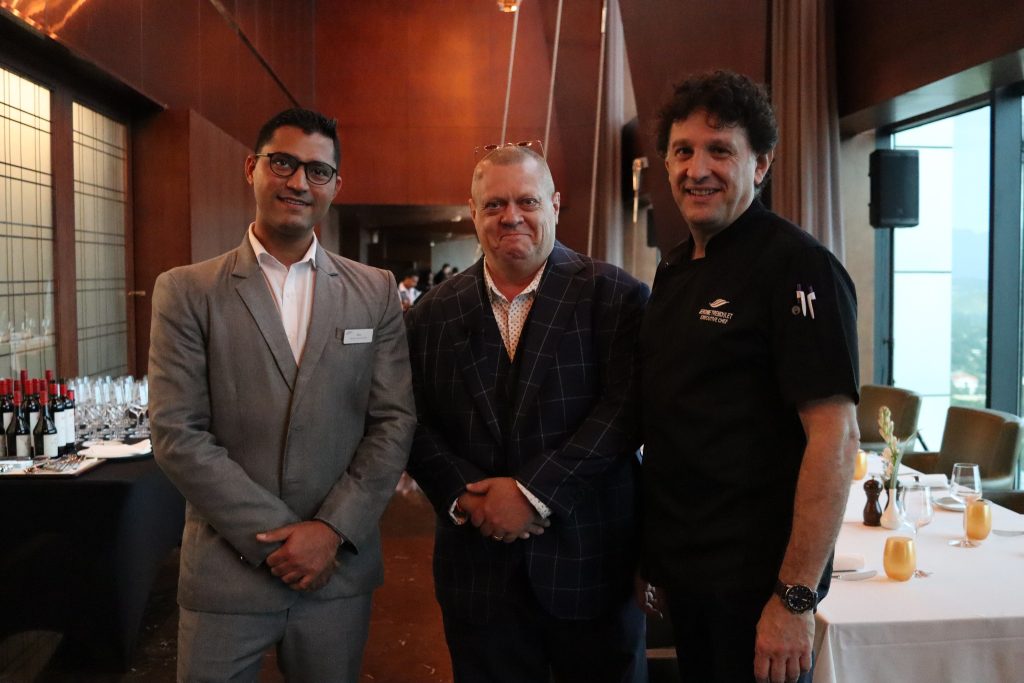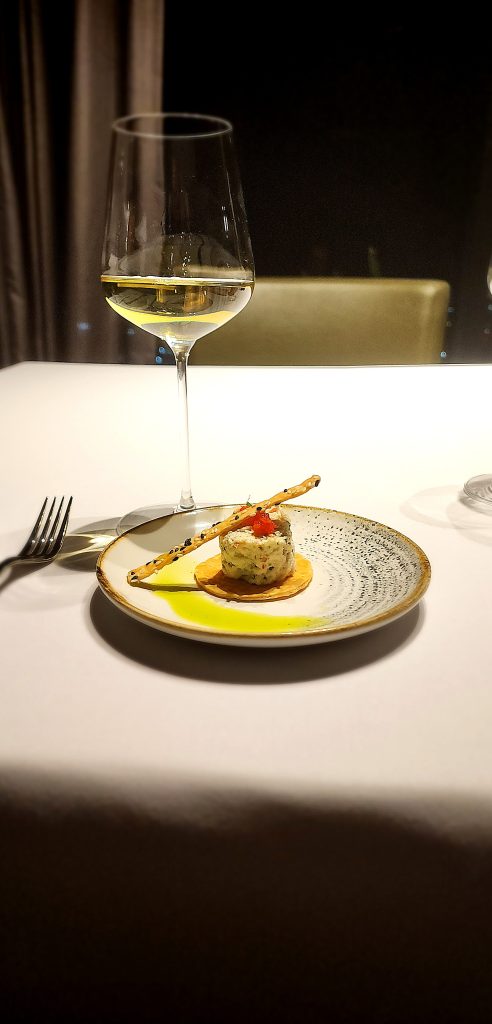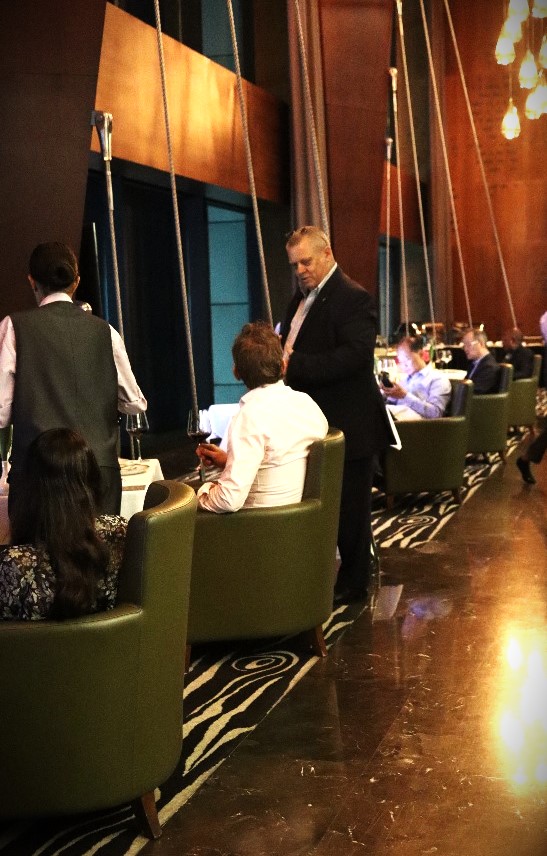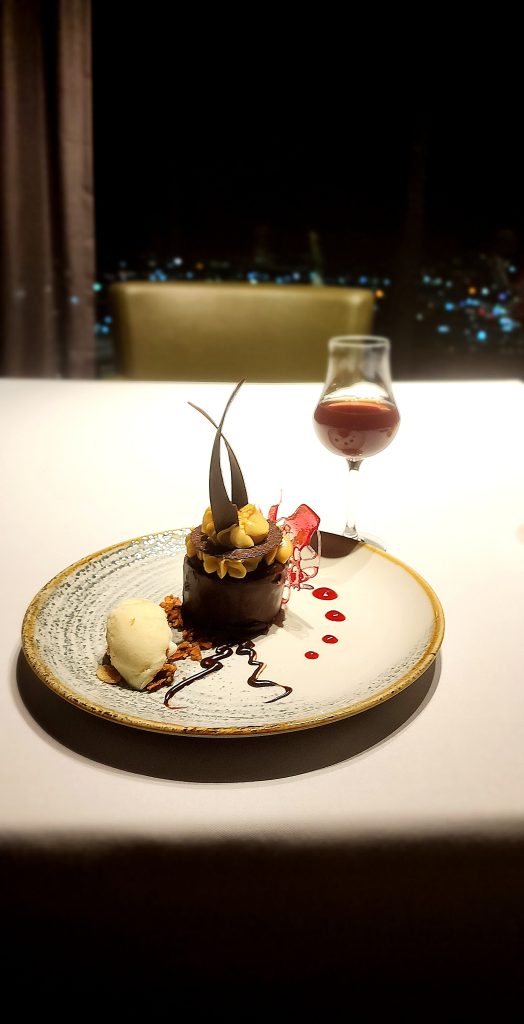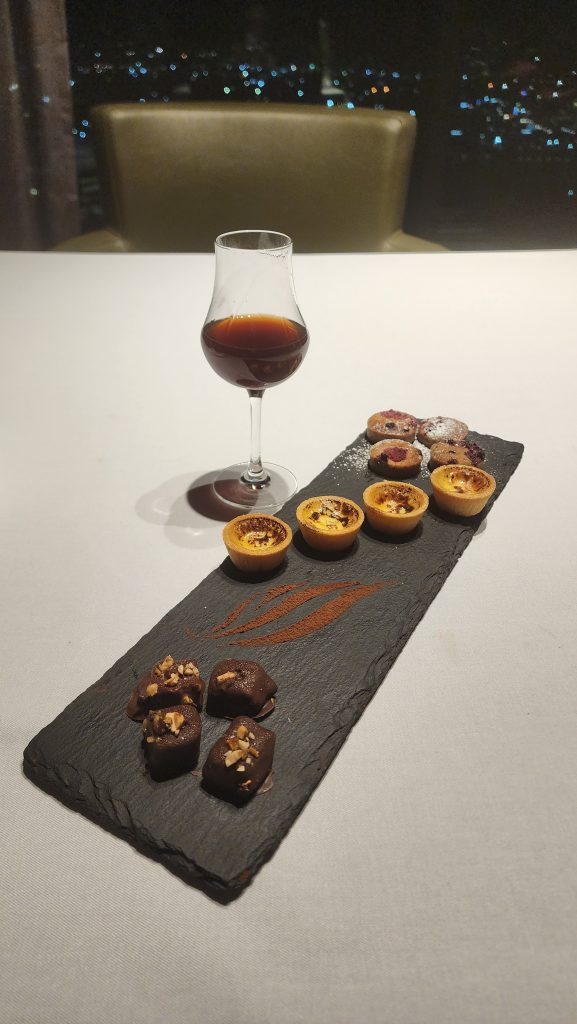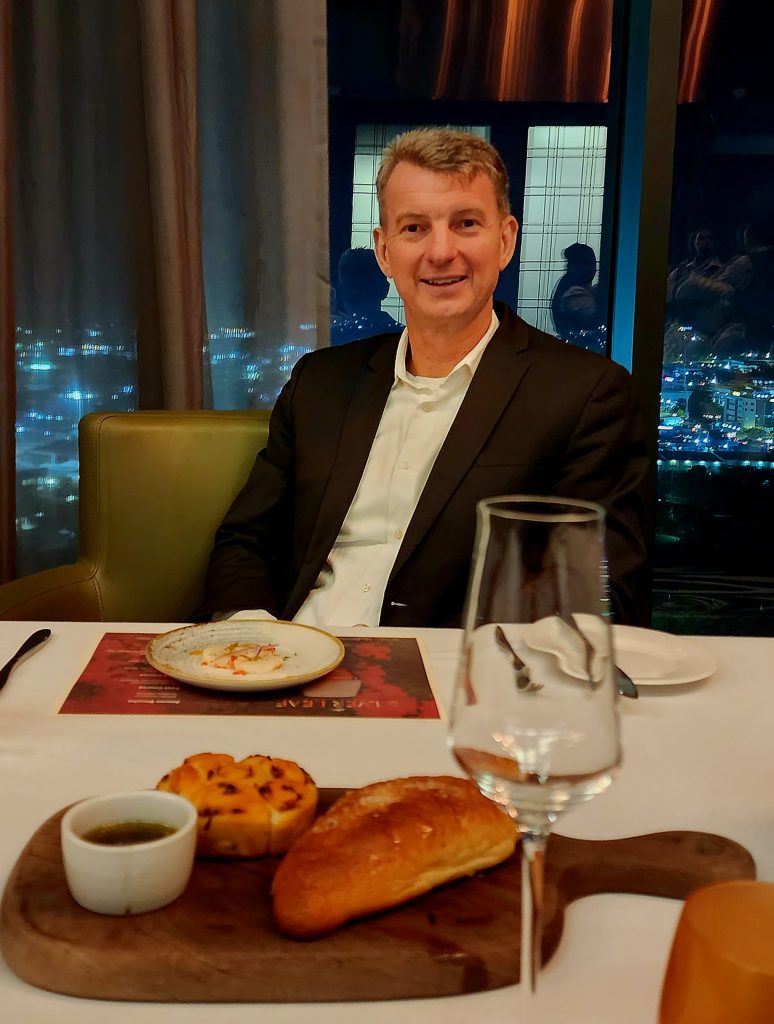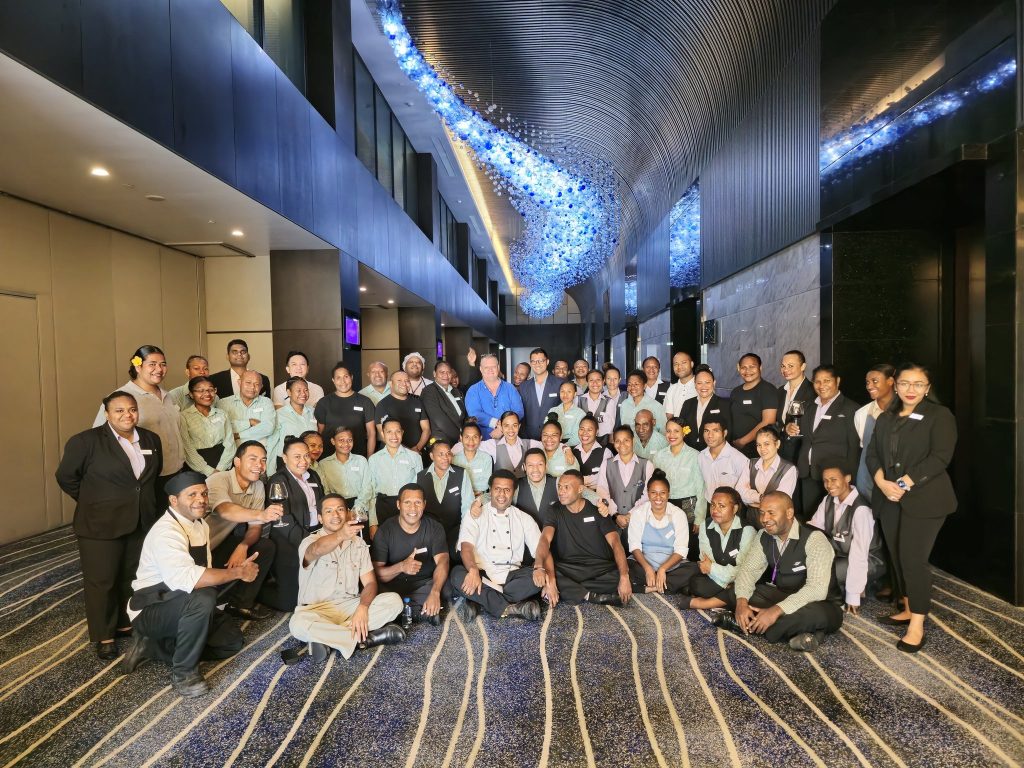Courage, Endurance, Mateship, Sacrifice
The Right Honourable
On the 25th of August 2024, ANZAC DAY, the Australian Prime Minister, The Right Honourable Anthony Albanese was in Papua New Guinea to give a speech, and… as fate would have it, so too was I.
The small village of Isurava sits midway between Port Moresby on the south coast, and Gona on the northern coast of Papua New Guinea. Here is where you will find an Australian War Memorial, four black granite pillars, brought over from Australia, each inscribed with a single word: ‘courage’, ‘endurance’, ‘mateship’, ‘sacrifice’.
Before giving his ANZAC Day speech at this site, the Australian Prime Minister and his Papua New Guinean counterpart, The Right Honourable James Marape, trekked seventeen kilometres of the infamous Kokoda Track, which runs through the Owen Stanley Range.
The single file path is ninety-six kilometres long in its entirety, and cuts through the lands of a mountain people known as the Koiari; it is rough, isolated, and difficult terrain, offering hot, humid days, intensely cold nights, torrential rainfall, and endemic tropical diseases.
The Kokoda Track was the scene of intense fighting during the Second World War, between local, and Australian armed forces fighting the Japanese; many lives were lost here, and the site has gone into folklore as part of the ANZAC legend. Today, a site that once literally tore people apart, is a place to bring them together, and for some help put them back together.
VX111628
Sydney Stanley Jones, born 1st of October 1917, in Launceston Tasmania, next of kin, Ivy Jones -wife. ARMY No. VX111628.
He enlisted in August 1940, his listed occupation a ‘cook’. He seems to have served (at first), in Australia on a part-time basis. There was a training workshop with the Australian Army Ordinance Corps, (AAOC), a 4th Army Field Workshop that lasted about three months.
He enlisted full-time in November of the same year. He was then deployed as a CFN, (craftsman) in the Royal Australian Electrical and Mechanical Engineers; a role for which he had dubious credentials, listing his occupation this time as: ‘salesman, (furnishings).’
Then he was deployed.
He was in the Army full-time for 1,563 days, and was on active service overseas for 156 days, in Bougainville and Torokina, Papua New Guinea, where a combination of local and Australian forces were trying to repel -or at least delay as long as possible- the Japanese Invasion of Papua New Guinea and its islands.
My maternal grandfather, (Pa as he was affectionately known) was a short, stocky man, five foot two and a half inches in the old money, and shaped something like an old school, one-pint milk bottle.
I remember him as always jolly, and seemingly content with his life. I also remember his peculiar habit of pouring a cup of tea into his saucer, (to cool it down faster apparently) and drinking it from there. I also recall him as a man devoted to his wife and somewhat resigned to the fact that all of his children, (4 of them) were girls.
Family legend has it that in the days of Melbourne pubs closing at 6pm, (the six o’clock swill they used to call it) when men would line up as many beers as possible just as last drinks were called. It was said that my grandmother (four foot nine inches) would sit in the front room by the fire, her chair turned to face the front door, and lay in wait with a good selection of shoes lined up and strategically placed at her side, arm cocked to the ready.
If Pa came home a little too late from these after work drinking sessions, then as soon as the front door swung open she would let fly with her arsenal. All who ever witnessed one of these aerial bombardments could only speak in awestruck tones of the speed and accuracy with which she unloaded her artillery on my grandfather’s bonce.
He was a painter of trams for as long as I can remember, it was often said by others, (but never by him) that he was very talented and should have been an artist, a painter of works of art, not a painter of mass transit vehicles. However, it was a government job, and he was a veteran with a wife and four baby girls to feed, educate and marry off. This type of work offered financial security and could not be passed up.
He loved going to dinner dances with his wife and playing cards with his expanding brood of grandchildren, which included me. Both my Pa and his wife Ivy had an almost insatiable appetite to play all manner of games with us grandchildren, card games, board games, even games with only pencil and paper. They seemed to know the rules and strategies to a thousand different games, and this alone was a commendable talent. However, their true gift was that they gave us their attention, their focus, their patience, and their time. They would stop and step out of their world to engage us in ours, and in doing so we would learn from them, learn about critical thinking, social engagement, fair play, and even conflict resolution, they gently guided us through it all.
Pa loved to garden, he bred orchids for his wife, he read Wilbur Smith novels and watched detective shows on a black-and-white TV. He followed the Melbourne Football Club and drove an EH Holden. Trips to his ancestral home in Tasmania, or to the Gold Coast to visit a daughter were semi regular holidays.
My one defining recollection of my Pa, is that I cannot once remember him ever being angry with me, or anyone else. I am sure he must have been, but never to any degree that it has stuck in my fading and withered memory. Perhaps, (just sometimes) that is what an older wife, four daughters and a World War can do to a man, take the sting out of him, and let him find his own inner peace; enjoy the simpler things in life.
To me, he was like a pebble in an often rapidly flowing and turbulent stream, Zen-like, he could have been a monk. In my memory of him now, it is as if he had no ego, was selfless, almost always calm and rarely very excitable. He calmly raised his four girls, enjoyed twelve grandchildren, and lived long enough to have more great-grandchildren than he could possibly even count, let alone name.
He never really talked to me about the war, in all my life I can only ever recall one single conversation with him about it, (when I was a young adult). He brought it up, he told me he never really saw any actual fighting, his job was to go in after the battles, the skirmishes and try to reclaim any vehicles, ordinance or artillery that were salvageable.
I can remember him telling me he only ever saw one body, I figured one was enough, it was obviously not an experience he wished to dwell on and that was just fine with me.
My parents separated when I was eight years old, I left home pretty much as soon as I could, I left my city and state for the last time when I was thirty and I left the country of my birth a few years later, very rarely to return. I didn’t see anywhere near enough of him when he was alive, and I miss him a hell of a lot more now that he’s dead.
His wife, Ivy ‘nana’ Jones passed away in 2003, at 93 years of age. It was something of a family scandal, one us grandchildren were not allowed to know -let alone ask or even speak about- the fact that she was ‘significantly older’ than my Pa. This implied that the age difference was so great that it would ‘bring embarrassment to the family’ should it ever get out. Today, I almost roll off my chair with laughter every time I consider this, given it was a mere seven-year age difference! How times have changed.
He hung on until he was ninety-eight, he’d spent several years in a care home by then, alone, but with lots of visits from his brood. He was by all reports fine, calm and content right up until the end, and then he was too frail, the body started to shut down and he was in pain, he told his daughter, (my mother) that he was ready to let go, and so embraced the end when it came for him.
The Stanley
After two flights and a sleepless night, I landed in Port Moresby at 5 am and made straight for The Stanley Hotel and the large, comfortable bed waiting there for me. When I awoke much later that afternoon; having gathered my intelligence and taken in my surroundings, I was acutely aware that my grandfather had fought here, against an invading force.
Late last century I travelled in Thailand to the Burma railway and the Kanchanaburi War Cemetery there, I also ventured into Mon State, Myanmar and visited the end of the same line there at Thanbyuzayat. What strikes you at first about all of the graves, is the familiarity of the names, names you heard in school, or grew up with in the neighbourhood, and then the sheer bloody horror of their ages hits you, nineteen, twenty, twenty-one, twenty-two, young men, boys really, sent here to their deaths. Good men lay in the ground here, the individual stories of each of their lives never to unfold, their existence halted suddenly, brutally, and violently, so very far from home.
My grandfather was just another one of those countless young men sent to fight, and very fortunately he managed to survive. At least 250,000 soldiers across all sides died here in Papua New Guinea, locals, Australian, Americans, Dutch and Japanese.
Darwin was bombed and Sydney discovered Japanese mini-submarines in their harbour; if the PNG force had failed to hold, the next shore the Japanese would have been invading was the Australian mainland.
On the afternoon I awoke still slightly dazed and confused, it was the 25th of April, Anzac Day, the day Australians and New Zealanders remember those who served in the defense of their country, the living, and the dead.
I had not seen him in well over a decade by the time he passed, I was off half a world away fighting my own demons, slaying my own dragons, yet to find my own path to inner peace.
Today, I fondly remember him, I am thankful for the things he shared with me and taught me, for his patience and his love. I am grateful for Sydney Stanley Jones, and I am proud to be his grandson.
Papua
As recorded by The Papua New Guinea High Commission in Australia; It is believed human beings arrived in what is now Papua New Guinea around 50,000 years ago, presumably by sea from Southeast Asia. These are the ancestors of the present inhabitants.
Spanish navigator, Don Jorge de Meneses, is credited with naming the southern coast of the mainland “Papua,” in the early 1500’s, it is a Malay word describing the frizziness of Melanesian hair. The term “New Guinea” was applied to the island in 1545 by another Spaniard, Ynigo Ortis de Retez, because he saw a similarity between the island’s Indigenous people and those found on the Guinea coast in West Africa.
European traders, adventurers and gold explorers from various countries visited the area during the 17th and 18th centuries, but no territorial claims were made until 1828 when the Dutch took control of the western half of New Guinea (now Irian Jaya or West Papua, which was ceded to Indonesia in 1962). British and German colonists and settlers followed, but due to the rugged terrain and isolated village communities, the success and impact of colonization was varied throughout the region.
Prior to the First World War PNG consisted of two separate colonial territories. The territory of Papua was a British colony from 1884 and was later ceded to Australia to administer. New Guinea was part of the German Empire until the First World War, when it was occupied by Australian forces in 1914. The territory was given to Australia to administer after the end of the War, as part of Treaty of Versailles.
During the Second World War Japanese forces occupied large parts of PNG from 1942 onwards, as the Japanese sought unsuccessfully to capture Port Moresby. After the end of the War in 1945 the two territories were formally amalgamated into the Territory of Papua New Guinea (TPNG).
The Australian administration focused its efforts on developing the cash economy of TPNG through investment in agriculture and mining and the democratisation of the central government. The Papua and New Guinea Act of 1949 provided for a Legislative Council, a judicial system, a civil service, and a local government system.
In 1964, (the year of my birth) the first House of Assembly was established to provide Papua New Guineans with a greater role in the country’s decision-making process. Preparations for political independence began in the late 1960s. In 1972 Michael Somare became Chief Minister of a democratically elected government and in 1973, the country was unified administratively and renamed Papua New Guinea. PNG became fully independent on September 16, 1975.
Unity in Diversity
Papua New Guinea is a fascinating place, known for its incredible cultural diversity, with over six hundred distinct Indigenous tribes and an estimated 7,000 different sub-cultures. These tribes all have unique traditions, languages, and ways of life. It is believed that there are still many more tribes -living in the most remote parts of the world’s second-largest island- that have still never had any contact with modern influences.
With just 1% of the world’s land area, Papua New Guinea boasts an estimated 7% of the world’s biodiversity [UNEP]. That is a concentration of life unlike anywhere else! The country boasts a stunning array of habitats: tropical rainforests, highland valleys, sprawling grasslands, ancient swamps, and extensive mangroves [UNEP].
Papua New Guinea has the richest island flora in the world, with over 13,600 species of vascular plants. This diversity is due to the island’s varied habitats, Orchids are the most diverse family, with over 2,800 species, while trees number nearly 4,000. Over two-thirds of these plants are endemic, found nowhere else on Earth
As part of the Coral Triangle, the marine biodiversity explodes here. Coral reefs teem with life, with an estimated 2,800 fish species, making up 10% of the world’s total [CBD]. Scientists estimate that more than half the plants and animals found in Papua New Guinea have yet to be scientifically named. This highlights the unique evolutionary history of the island. New species are still being discovered, adding to the incredible biodiversity count.
It is most appropriate that the motto for this incredible place, nation, and people is, “Unity in Diversity.”
Silver Leaf
I was here in this fascinating country to present a master class and a series of food and wine pairing dinners for my good friends at the iconic Australian winery, Penfolds and the very good people of The Stanley Hotel, the finest hospitality and accommodation venue in Port Moresby.
Penfolds is a historic Australian winemaker, founded in 1844 by Christopher Rawson Penfold, an English physician who emigrated to South Australia with his wife Mary Penfold. It is one of Australia’s oldest wineries. Decorated with international trophies, gold medals, and a multiple recipient of the highest possible scores from the industry’s leading critics; Penfolds is undoubtedly the most famous Australian name in the world of wine today.
High up on the top floor of The Stanley Hotel & Suites, overlooking the Sir John Guise Stadium is Silver Leaf restaurant, Port Moresby’s premier fine dining destination. With its soaring ceilings, floor-to-roof windows offering panoramic views, combined with a modern, elegant design and a private club vibe, this is the place for relaxing with elegance and for chic, sophisticated dining.
The dinner was designed and prepared by the hotel’s Executive Chef, Jerome Tremoulet, who was previously the executive chef at Penfolds own Magill Estate restaurant at their Adelaide winery. Each dish specifically created by Jermone and his team, to complement and highlight these incredibly special wines.
Jerome Tremoulet is an outstanding chef, Phil Lempert, food editor for ‘Today’ on the American News Channel MSNBC reported at the time:
“French-born Jerome Tremoulet joined Penfolds Magill Estate Restaurant in Australia in 2005 as executive chef. With his understanding and passion for fine food and great wines, combined with his infectious enthusiasm, Tremoulet brings a fresh new flavour to South Australia’s most famous fine dining winery restaurant, nestled in the heart of its winemaking region.
Having trained at a classical French school, Tremoulet developed and honed his extensive skills over 20 years of experience in some of the great kitchens throughout France, Switzerland, England, America, and Australia. He spent two years at Saint Clair Le Traiteur, one of the most prestigious catering companies in Paris.
Tremoulet joined Penfolds’ Magill Estate Restaurant from the Four Seasons Hotel in Newport Beach, California, where he was executive sous chef. His style combines classic French flavours with modern Australian ingredients. While being a creative chef, Tremoulet maintains a deep respect for technique, a delicate touch, and a passion for fresh, locally sourced, and seasonal ingredients — all of which combine to produce exceptional results, especially for a restaurant serving contemporary cuisine with a classical influence.
Of course, Tremoulet works closely with the Penfolds winemaking team to ensure that the food and wine pairings not only work together perfectly but are also infinitely interesting—and often surprising.”
There was perhaps no better chef in the world today, to create an extraordinary Penfolds food and wine pairing degustation, yet chef Jerome Tremoulet still managed to exceed everyone’s expectations.
Master Class Wines
The master class wines presented to a small group of enthusiastic wine lovers were:
Penfolds, Bin 51, Riesling, 2022
First released in 1990, the admirably captures the unique personality of this variety in the Eden Valley, full of citrus and lemongrass, wrapped in talc-like acidity and wet stone minerality.
Penfolds, Bin 138, Grenache/Shiraz/Mataro, 2017
A classic Barossa and Southern Rhone blend of 68% Shiraz, 23% Grenache, 9% Mataro, the wine is typically plush with red berry fruits, and a touch of savoury notes like Chorizo and pan spices. The palate is open and generous with raspberry compote, boysenberry, plums, and some peppery, garam-masala notes.
Penfolds, Bin 28 Kalimna, Shiraz, 2020
First made in 1959, Bin 28 was originally named after the famous Barossa Valley Kalimna vineyard purchased by Penfolds in 1945. It is the very first of the ‘Bin’ series of wines.
Quintessential Penfolds here with ripe fruit aromas of plums, dark chocolate, fennel, and cola. The palate shows a commendable balance between warm climate generosity and opulence combined with finesse, (even restraint) and remarkable structure.
Penfolds, Bin 389, Cabernet/Shiraz, 2021
Affectionately referred to as ‘Baby Grange,’ or sometimes ‘Poor Man’s Grange’ because it supposedly gets the (second fill) use of oak barrels previously used (as new oak) for the previous year’s Grange and is a blend of the same varieties. First made in 1960 by the legendary Max Schubert, this was the wine that helped forge Penfolds’ reputation with red wine drinkers by combining the structure of cabernet sauvignon with the richness of Shiraz. The wine was a complex blend of plums, violets, sage, and cigar box, handled with Penfolds’ typical expression of powerful fruit character wrapped up in grace and finesse.
Penfolds, Bin 407, Cabernet Sauvignon, 2021
First produced in 1990 (and released in 1993), Bin 407 was developed in response to the increasing availability of high-quality Cabernet Sauvignon fruit. Inspired by the Bin 707 Penfolds’ top Cabernet Sauvignon wine, Bin 407 offers varietal definition and approachability, still the Penfolds’ ‘House Style’ of plush ripe fruit, fine, depth and multi-regional complexity plus an elegant, refined structure.
Penfolds, Bin 798 RWT, Shiraz, 2017
The RWT Barossa Valley Shiraz represents an alternative to the multi-regional sourcing and American oak maturation that are hallmarks of Penfolds Grange, Australia’s most famous wine. The RWT, instead expresses a single region. the Barossa Valley, and a single variety, Shiraz, matured solely in French oak. The initials RWT stand for ‘Red Winemaking Trial,’ the name given to the project internally when developmental work began in 1995. No longer a trial, RWT Shiraz was launched in May 2000 with the 1997 vintage. The wine is opulent and fleshy, whereas Grange is more muscular and assertive. RWT is made from fruit selected primarily for its aromatic qualities and lush textures. The result is a wine that helps to redefine Barossa Shiraz at the highest level of quality.
The wines were all outstanding and greatly appreciated by those in attendance as were the marvelous views out over Port Moresby, the exceptional service from the Silver Leaf team and the brilliant canapes and accompanying morsels prepared by the kitchen.
WINE PAIRING DINNERS
Silver Leaf Wine Dinner for the 26th & 27th of April 2024
THE MENU
Canapes
Creamy Pork Belly
Ginger, shallots jam
Bandini Prosecco NV, Veneto Italy
Amuse Bouche
Crab Remoulade, Salmon Roe
Penfolds Bin 51 Riesling, Eden Valley
Entree
Confit salmon, Peas Puree, compress cucumber, corn reduction
Penfolds Bin 311 Chardonnay, Tasmania, Tumbarumba, Adelaide Hills
Main
Charcoal Grilled Wagyu Beef Tenderloin
Turnips, baby carrot, marrow jus
Penfolds Bin 150 Shiraz, Marananga Barossa
Cheese
Marinated Goat Cheese, Rosemary Bread, Highlands Honey
Penfolds Bin 128 Shiraz, Coonawarra
Dessert
Peanut Butter Cake, Chocolate Delice, Vanilla Ice Cream
Penfolds Club Old Tawny Port NV
The dinners held over two consecutive nights were an outstanding success, and both sold out. This was a culinary triumph for the restaurant; pairings were imaginative and magical, the dishes themselves creative, perfectly executed and absolutely divine on the palate.
Highlights amongst a consistently excellent degustation where the crab remoulade with its sweet crab flesh and tart characters was a perfect canvas to splash with the citrus and minerality of the Eden Valley Riesling and really made the wine and dish sing in perfect harmony.
The cool climate (Adelaide Hills) Chardonnay: with its smoky oak notes, its rich fig, and white peach flavours along with that fine mineral finish. Here was a wine that was simply waiting for the day the Salmon was caught, that was destined to be prepared and served with it, a classic pairing.
The Bin 150 Shiraz, made with famed Maranga fruit, some of the finest in the Barossa, was a fitting accompaniment to the charcoal-grilled Wagyu Beef Tenderloin. Here we had a wine with enough weight and depth of flavour to match the beef, even enhance it with its subtle peppery notes, but all the finesse, ‘old vine’ silky fine tannins and bright, savoury acidity to clean up the rich juices and buttery fattiness of the protein to revive and refresh the palate.
Inspired and arranged by The Stanley Hotel’s General Manager Damian Cooper, executed by Assistant Food and Beverage Director Abu Sayeed Choudhary, prepared by Executive Chef Jerome Tremoulet, and served by the wonderful, smiling team at The Stanley Hotel & Residences and their Silver Leaf Hotel. This was a tremendous evening of fine dining and grand hospitality, a night to remember and a fitting tribute to those who served here and the rich diversity of this fascinating place.
I am grateful to all of the talented and marvelous people at The Stanley Hotel, the people at Penfolds Wines, the guests who came to our events and the people of Papua New Guinea for the warmth, enthusiasm, comradeship and friendship shown to me, and the absolute quality of the events I was fortunate enough to conduct.
However, I am also profoundly grateful to have had the chance on ANZAC Day, to be in the land where my beloved ‘Pa’ had served his country with distinction, where I was able to bring him back home to me.


